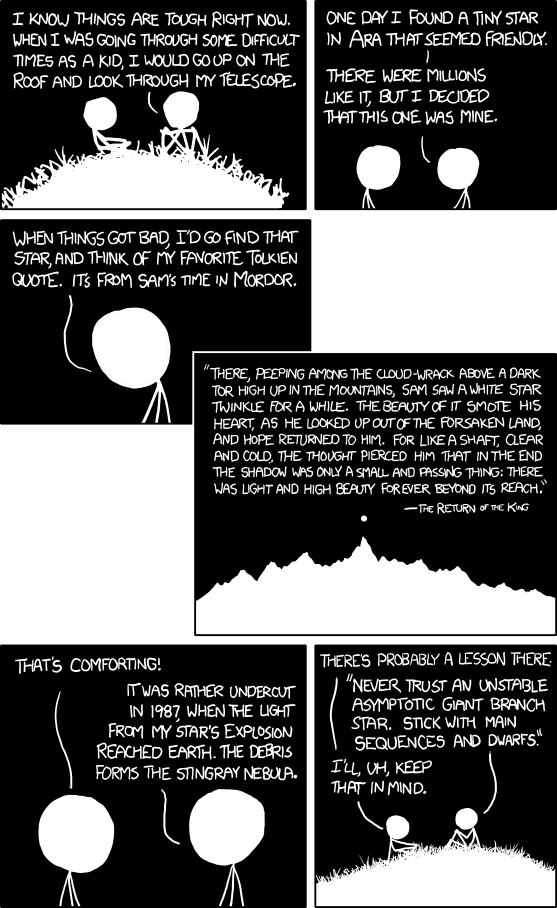January 14, 2011
#847: Stingray Nebula explain

[Cueball and his Cueball-like friend to the left is shown as white silhouettes against a dark sky. They’re sitting on top of a grassy hill also shown inverted as white.]
Cueball: I know things are tough right now. When I was going through some difficult times as a kid, I would go up on the roof and look through my telescope.
[Zoom in on the twos white heads and upper torso only.]
Cueball: One day I found a tiny star in Ara that seemed friendly.
Cueball: There were millions like it, but I decided that this one was mine.
[Zoom in only on Cueball’s head and torso.]
Cueball: When things got bad, I’d go find that star, and think of my favorite Tolkien quote. It’s from Sam’s time in Mordor.
[The next panel is diagonally downward to the right of the previous. The upper left corner overlaps. A single star is shown above the highest peak in a jagged chain of mountains with at least five other large peaks and several smaller ones. Above the star in the black sky is a long quote.]
“There, peeping among the cloud-wrack above a dark tor high up in the mountains, Sam saw a white star twinkle for a while. The beauty of it smote his heart, as he looked up out of the forsaken land, and hope returned to him. For like a shaft, clear and cold, the thought pierced him that in the end the shadow was only a small and passing thing: There was light and high beauty forever beyond its reach.”
—The Return of the King
[Back to normal panels below the quote panel. Larger zoom than in panel two both showing the same of the two.]
Friend: That’s comforting!
Cueball: It was rather undercut in 1987, when the light from my star’s explosion reached Earth. The debris forms the Stingray Nebula.
[Zooming further out even than the first panel, showing more of the grassy mound below the two.]
Friend: There’s probably a lesson there.
Cueball: “Never trust an unstable asymptotic giant branch star. Stick with main sequences and dwarfs.”
Friend: I’ll, uh, keep that in mind.